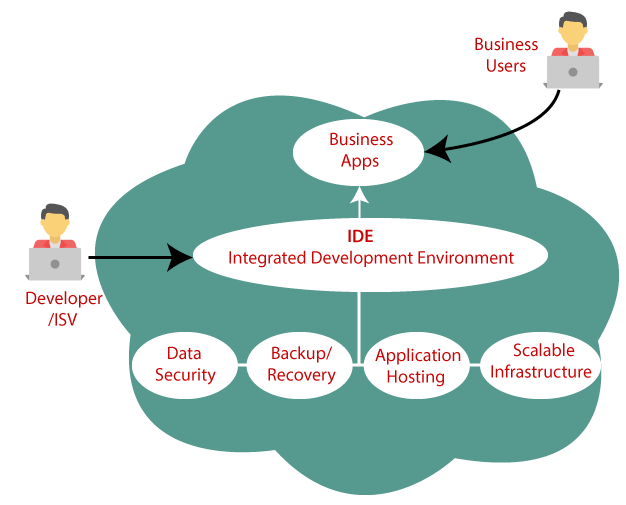Platform as a Service
Platform as a Service (PaaS)
Platform as a service (PaaS) is a programming platform for developer which is created for the programmer to develop, test, run and manage the applications.
In PaaS developer can efficiently write the application and deploy it directly into PaaS layer. It also provides the run time environment for application development. The client uses a hosting environment for their application. The client controls the applications that run in the environment but does not control the software, hardware or network infrastructure on which they are running.

Example of PaaS
- Google apps engine (GAE)
- Windows Azure
- Sales force.com
PaaS consist of:
- Physical infrastructure:-It contains data centers, servers, storage, and network equipment.
- Intermediate layer software:-It contains operating system, libraries, language frameworks, tool for building applications.
- User interface:- It includes a graphical user interface (GUI), a command line interface or both: the interface displays the architecture and logic of the deployment machinery.
Advantages of PaaS
- The cost of PaaS is low because thedevelopment through PaaS requires a computer and a good internet connetion so less investment is required for hardware and software.
- Simple and easy to use
- PaaS is highly scalable because application developed can scale from one to thousands of users without any change to the applications.
- Possibility of lower risk because there is no requirement of up-front investment in hardware and software developers only needs a PC and an internet to start building application.
Disadvantages of PaaS
- Movement or transfer from one pass vendor’s application to another PaaS vendor will create some problem.
- Privacy of data can get hamper if it is not held within the limit of the company or organization.